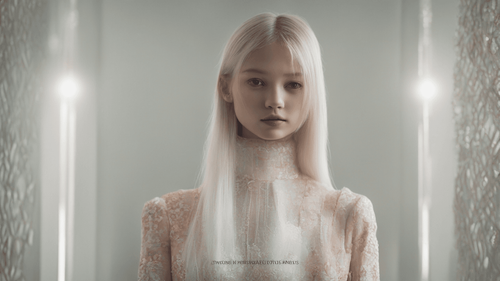
Introduction
In today's rapidly evolving technological landscape, artificial intelligence (AI) continues to push boundaries and reshape industries. One such remarkable application is AI photo from text transformation, a captivating blend of innovation and artistry. In this article, we delve into the enchanting realm of AI-driven photo creation from text, exploring its significance, capabilities, and potential impacts.
AI Photo from Text: An Overview
Unleashing the Power of AI
In recent years, AI has transcended conventional expectations, enabling machines to emulate human-like behaviors and cognitive functions. One fascinating manifestation of this is the AI's ability to turn textual descriptions into vivid, lifelike images—a process known as "AI photo from text" transformation. This technology harnesses the prowess of neural networks and deep learning algorithms to interpret and visualize text, offering a gateway to unbounded creativity.
How AI Photo from Text Works
Behind the Scenes: The Neural Magic
At the heart of AI photo from text transformation lies a complex interplay of neural networks. These networks, particularly Generative Adversarial Networks (GANs), decode textual inputs and synthesize corresponding images with remarkable precision. The generator network fabricates images, while the discriminator network evaluates their authenticity. Through iterative refinement, these networks collaborate to create visuals that closely align with the provided text—a technological marvel that continues to astound.
From Text to Pixels: The Workflow
The AI photo from text transformation process follows a meticulous workflow. It commences with text analysis, where the algorithm dissects the textual input, extracting relevant features and details. Subsequently, the generator network comes to life, crafting an initial image representation. Through successive iterations, the image evolves, gaining coherence, detail, and intricacy. The result is a seamless fusion of language and imagery, a testament to AI's remarkable ability to translate concepts into visuals.
Applications of AI Photo from Text
Fostering Artistic Expression
AI photo from text transformation transcends mere technology; it serves as a powerful tool for artistic expression. Imagine a world where authors can breathe life into their narratives, translating vivid descriptions into tangible visual representations. This transformative capability holds immense potential for writers, artists, and storytellers alike, bridging the gap between language and art.
Revolutionizing Design and Creativity
In the realm of design, AI photo from text offers a new dimension of creativity. Graphic designers, architects, and creatives of all kinds can now articulate their visions with unprecedented clarity. By articulating intricate design elements through text, professionals can swiftly generate compelling visuals, expediting the ideation process and opening doors to innovative design solutions.
Enhancing Educational Experiences
Education stands to gain substantially from AI photo from text transformation. Complex concepts that once relied solely on verbal or textual descriptions can now be visualized effortlessly. Students grappling with abstract notions can now access a visual medium that demystifies the abstract and fosters deeper understanding—a paradigm shift that has the potential to redefine pedagogical approaches.
The Ethical Landscape
Navigating Ethical Frontiers
As AI photo from text technology evolves, ethical considerations come to the forefront. The question of ownership and copyright emerges: Who holds the rights to AI-generated images? Additionally, concerns regarding the potential misuse of AI-generated visuals underscore the need for robust regulations and guidelines. Striking a balance between innovation and ethical responsibility remains a paramount challenge.
FAQs
Is AI photo from text transformation limited to professionals?
Not at all. While professionals can certainly leverage this technology, it's designed to be accessible to a broad audience. Anyone with a creative inclination or a desire to bring their ideas to life can explore and utilize AI photo from text transformation tools.
Can AI-generated images be used for commercial purposes?
Yes, AI-generated images can be used for commercial purposes. However, it's crucial to ensure that you have the necessary rights and permissions, especially if the AI-generated content is based on copyrighted text.
Does AI photo from text have real-world applications beyond the creative domain?
Absolutely. AI photo from text has the potential to impact various industries, such as e-commerce, advertising, and more. For instance, businesses could use AI-generated images to showcase products, create advertisements, and enhance visual content.
How accurate are AI-generated images in reflecting the text descriptions?
AI-generated images have made significant strides in accuracy, but perfection remains a challenge. The technology excels in capturing the essence of textual descriptions, but minor discrepancies and artistic variations may still occur.
Can AI photo from text technology work with multiple languages?
Yes, AI photo from text technology has the capability to work with multiple languages. It's designed to process and interpret textual inputs from various languages, broadening its reach and potential impact.
What role does human oversight play in AI photo from text transformation?
Human oversight is vital in refining and validating the output of AI photo from text transformation. While the technology is incredibly advanced, human intervention ensures that the generated images align with the intended creative vision and meet quality standards.
Conclusion
In the enthralling realm of AI photo from text transformation, technology and creativity converge in unprecedented ways. The ability to transmute words into vibrant visuals holds the promise of transforming industries, nurturing artistic endeavors, and revolutionizing education. As we stand at the threshold of this transformative era, ethical considerations guide our path forward. The captivating journey of AI photo from text continues to unfold, inviting us to explore the boundless possibilities that lie ahead.
Unlock the world of creativity through AI photo from text transformation. Explore how technology is redefining imagination and artistry. Discover more at Picasso AI.
[References]:
- "Artificial Intelligence and Creativity: If Creativity Is Unique, What Is Left for AI?" - Forbes (https://www.forbes.com/sites/cognitiveworld/2020/02/05/artificial-intelligence-and-creativity-if-creativity-is-unique-what-is-left-for-ai/)
- "Generative Adversarial Networks (GANs)" - NVIDIA Developer (https://developer.nvidia.com/generative-adversarial-networks)
- "AI-Generated Art and the Allure of the Copy" - The Atlantic (https://www.theatlantic.com/technology/archive/2018/10/ai-generated-art-invades-copyright/573359/)
- "Exploring the Ethical Considerations of AI Art" - OpenAI (https://www.openai.com/research/ai-and-ethical-art/)